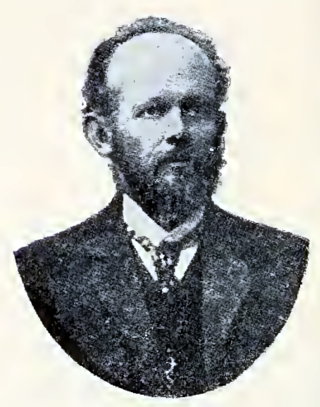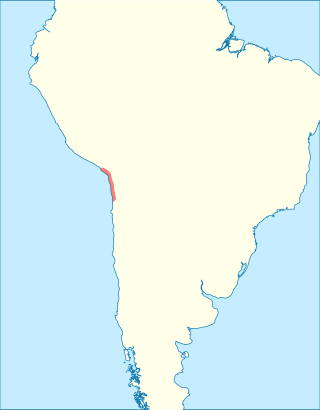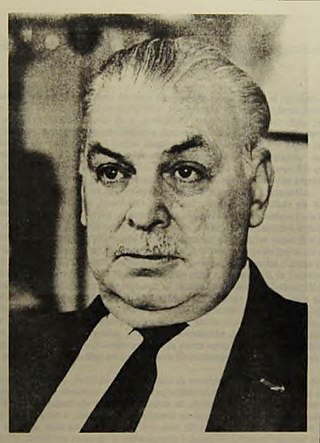
Rodolfo AmandoPhilippi was a German–Chilean paleontologist and zoologist. Philippi contributed primarily to malacology and paleontology. His grandson, Rodulfo Amando Philippi Bañados (1905-1969), was also a zoologist and in order to avoid confusion in zoological nomenclature, the elder is referred to as "Philippi [Krumwiede]" to distinguish him from his grandson "Philippi [Bañados]".
Azapa Valley is a fertile and narrow oasis in Arica y Parinacota Region, Chile. It is framed between two sere hills and divided by the San Jose River that runs during the summer season. It is located three kilometres (1.9 mi) from the city of Arica. This jewel of the north has a unique climate that permits the farming of a great variety of fruits and vegetables throughout the year. This is in addition to the unique Azapa olives, renowned for their violet color and bitter flavor that also gives birth to a hearty oil.

The Chinchorro mummies are mummified remains of individuals from the South American Chinchorro culture, found in what is now northern Chile. They are the oldest examples of artificially mummified human remains, having been buried up to two thousand years before the Egyptian mummies. The earliest mummy that has been found in Egypt dated around 3000 BCE, while the oldest anthropogenically modified Chinchorro mummy dates from around 5050 BCE.

The Natural History Museum in Lima, is Peru's most important museum of natural history. It was established in 1918 and belongs to the National University of San Marcos.

Giorgio Jan was an Italian taxonomist, zoologist, botanist, herpetologist, and writer. He is also known as Georg Jan or Georges Jan. He was the first director of the natural history museum at Milan.

Karl Friedrich Reiche was a German botanist who worked as a university professor in Chile and Mexico.

Adolf Ernst was a Prussian-born scientist. Ernst settled in Venezuela in 1861, where he taught at the Central University of Venezuela. He became the most important scientist in the country during the second half of the 19th century and was a key figure in the creation of the Museum of Natural Science and the National Library of Venezuela, where he also served as its director.

Museo de la Naturaleza y Arqueología (MUNA), is a museum-based in Santa Cruz de Tenerife, Tenerife,. It contains many significant archaeological finds and is considered the best repository of objects from the Pre-Castilian Canary Islands. The museum also houses significant paleontological, botanical, entomological, and marine and terrestrial vertebrate collections, and is considered the best Natural Library of the Canary Islands.

The Plomo Mummy is the well preserved remains of an Incan child found on Cerro El Plomo near Santiago, Chile in 1954. It was discovered by Guillermo Chacón Carrasco, Jaime Ríos Abarca, and Luis Gerardo Ríos Barrueto. The mummy was brought to the attention of Grete Mostny at the Chilean National Museum of Natural History; she later proved instrumental in the museum's acquisition of the specimen. The Plomo Mummy was the first notable frozen mummy discovery of high-altitude Capacocha human sacrifice by the Incas, a practice called qhapaq hucha.

The La Plata Museum is a natural history museum in La Plata, Argentina. It is part of the Facultad de Ciencias Naturales y Museo of the National University of La Plata.

Scurria variabilis is a species of sea snail, a true limpet, a marine gastropod mollusk in the family Lottiidae, one of the families of true limpets.

Grete Mostny was a Jewish Austrian who became a leading Chilean anthropologist. She was born in Austria but had to leave because of the rise of the Nazis. She went to Belgium to complete her studies before leaving for Chile. At the end of the war she was invited back to Austria but she preferred to become a naturalised Chilean. She led a number of archaeological investigations and the Chilean National Museum of Natural History.

The Muisca inhabited the Altiplano Cundiboyacense in the Colombian Andes before the arrival of the Spanish and were an advanced civilisation. They mummified the higher social class members of their society, mainly the zipas, zaques, caciques, priests and their families. The mummies would be placed in caves or in dedicated houses ("mausoleums") and were not buried.
Bernardo Arriaza is a Chilean physical anthropologist with an emphasis on bioarchaeology.

The Chinchorro culture of South America was a preceramic culture that lasted from 9,100 to 3,500 years BP. The people forming the Chinchorro culture were sedentary fishermen inhabiting the Pacific coastal region of current northern Chile and southern Peru. Presence of fresh water in the arid region on the coast facilitated human settlement in this area. The Chinchorro were famous for their detailed mummification and funerary practices. The area of the Chinchorro culture started to receive influences from the Andean Plateau around 4,000 BP, which led to the adoption of agriculture. Much later, it came under the influence of the Tiwanaku Empire.

Humberto Fuenzalida Villegas (1904–1966) was a Chilean geologist, paleontologist and geographer. Fuenzalida headed in turn the geography and geology departments of the University of Chile, being also founder of Sociedad Geológica de Chile, a professional society grouping Chile's geologists. In 1938 he took charge of the geological and paleontological collection of Chilean National Museum of Natural History by request of Ricardo E. Latcham. In 1948 he became director of the museum holding that post until 1964 when he was succeeded by Grete Mostny. Fuenzalida championed the establishment of a geology degree in the University of Chile, leading a successful effort in 1961.
El Molle culture was a South American archaeological culture from in the Transverse Valleys of Norte Chico known chiefly for its ceramics. The culture existed from 300 to 700 CE and was later replaced in Chile by Las Ánimas culture that developed between 800 and 1000 CE. This last culture then gave way to the historical Diaguita culture encountered by the Spanish in the 16th century. El Molle culture coexisted for a significant time with La Animas culture. It is possible that Las Ánimas culture learned copper metallurgy from El Molle.

The National Museum of Natural History in Montevideo is a natural history museum in Uruguay. It opened in 1838, and is the oldest scientific institution in Uruguay and one of the oldest natural history collections in the world. The museum's first permanent exhibition space is at Miguelete 1825—the former Miguelete Prison—and the scientific collections, library and administrative offices are at Calle 25 de Mayo 582 in the Old City.
Rodulfo Amando Philippi Bañados was a Chilean ornithologist. The great-grandson of German naturalist Rodolfo Amando Philippi (1808-1904), he worked at the Museo Nacional de Historia Natural de Chile as a curator of birds and wrote extensively on Chilean ornithology. By profession he was a pediatrician.

















